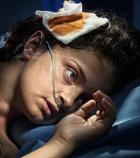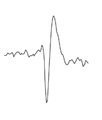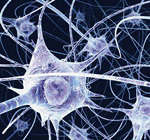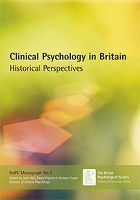Tom Stafford's Blog, page 11
January 8, 2016
Psychotherapies and the space between us
 There’s an in-depth article at The Guardian revisiting an old debate about cognitive behavioural therapy (CBT) versus psychoanalysis that falls into the trap of asking some rather clichéd questions.
There’s an in-depth article at The Guardian revisiting an old debate about cognitive behavioural therapy (CBT) versus psychoanalysis that falls into the trap of asking some rather clichéd questions.
For those not familiar with the world of psychotherapy, CBT is a time-limited treatment based on understanding how interpretations, behaviour and emotions become unhelpfully connected to maintain psychological problems while psychoanalysis is a Freudian psychotherapy based on the exploration and interpretation of unhelpful processes in the unconscious mind that remain from unresolved conflicts in earlier life.
I won’t go into the comparisons the article makes about the evidence for CBT vs psychoanalysis except to say that in comparing the impact of treatments, both the amount and quality of evidence are key. Like when comparing teams using football matches, pointing to individual ‘wins’ will tell us little. In terms of randomised controlled trials or RCTs, psychoanalysis has simply played far fewer matches at the highest level of competition.
But the treatments are often compared due to them aiming to treat some of the same problems. However, the comparison is usually unhelpfully shallow.
Here’s how the cliché goes: CBT is evidence-based but superficial, the scientific method applied for a quick fix that promises happiness but brings only light relief. The flip-side of this cliché says that psychoanalysis is based on apprenticeship and practice, handed down through generations. It lacks a scientific seal of approval but examines the root of life’s struggles through a form of deep artisanal self-examination.
Pitching these two clichés against each other, and suggesting the ‘old style craftsmanship is now being recognised as superior’ is one of the great tropes in mental health – and, as it happens, 21st Century consumerism – and there is more than a touch of marketing about this debate.
Which do you think is portrayed as commercial, mass produced, and popular, and which is expensive, individually tailored, and only available to an exclusive clientèle? Even mental health has its luxury goods.
But more widely discussed (or perhaps, admitted to) are the differing models of the mind that each therapy is based on. But even here simple comparisons fall flat because many of the concepts don’t easily translate.
One of the central tropes is that psychoanalysis deals with the ‘root’ of the psychological problem while CBT only deals with its surface effects. The problem with this contrast is that psychoanalysis can only be seen to deal with the ‘root of the problem’ if you buy into to the psychoanalytic view of where problems are rooted.
Is your social anxiety caused by the projection of unacceptable feelings of hatred based in unresolved conflicts from your earliest childhood relationships – as psychoanalysis might claim? Or is your social anxiety caused by the continuation of a normal fear response to a difficult situation that has been maintained due to maladaptive coping – as CBT might posit?
These views of the internal world, are, in many ways, the non-overlapping magisteria of psychology.
Another common claim is that psychoanalysis assumes an unconscious whereas CBT does not. This assertion collapses on simple examination but the models of the unconscious are so radically different that it is hard to see how they easily translate.
Psychoanalysis suggests that the unconscious can be understood in terms of objects, drives, conflicts and defence mechanisms that, despite being masked in symbolism, can ultimately be understood at the level of personal meaning. In contrast, CBT draws on its endowment from cognitive psychology and claims that the unconscious can often only be understood at the sub-personal level because meaning as we would understand it consciously is unevenly distributed across actions, reactions and interpretations rather than being embedded within them.
But despite this, there are also some areas of shared common ground that most critics miss. CBT equally cites deep structures of meaning acquired through early experience that lie below the surface to influence conscious experience – but calls them core beliefs or schemas – rather than complexes.
Perhaps the most annoying aspect of the CBT vs psychoanalysis debate is it tends to ask ‘which is best’ in a general and over-vague manner rather than examining the strengths and weaknesses of each approach for specific problems.
For example, one of the central areas that psychoanalysis excels at is in conceptualising the therapeutic relationship as being a dynamic interplay between the perception and emotions of therapist and patient – something that can be a source of insight and change in itself.
Notably, this is the core aspect that’s maintained in its less purist and, quite frankly, more sensible version, psychodynamic psychotherapy.
CBT’s approach to the therapeutic relationship is essentially ‘be friendly and aim for cooperation’ – the civil service model of psychotherapy if you will – which works wonderfully except for people whose central problem is itself cooperation and the management of personal interactions.
It’s no accident that most extensions of CBT (schema therapy, DBT and so on) add value by paying additional attention to the therapeutic relationship as a tool for change for people with complex interpersonal difficulties.
Because each therapy assumes a slightly different model of the mind, it’s easy to think that they are somehow battling over the ‘what it means to be human’ and this is where the dramatic tension from most of these debates comes from.
Mostly though, models of the mind are just maps that help us get places. All are necessarily stylised in some way to accentuate different aspects of human nature. As long as they sufficiently reflect the territory, this highlighting helps us focus on what we most need to change.


January 5, 2016
An inner beauty of neurosurgery
 The New York Times has an excellent profile of British neurosurgeon Henry Marsh that manages to be an indiscreet but humane look at the medic now famous for his autobiography Do No Harm
The New York Times has an excellent profile of British neurosurgeon Henry Marsh that manages to be an indiscreet but humane look at the medic now famous for his autobiography Do No Harm
It follows Marsh as he operates with colleagues in Albania and recounts both his work and personal style. It is written by the Norwegian novelist Karl Ove Knausgård and reads like downbeat gonzo journalism that hits some perfect notes along the way.
Could Marsh, this brilliant neurosurgeon, be troubled by a constant need to call attention to himself? Weren’t his extraordinary qualities, so obvious to everyone around him, fixed securely in his own image of himself?
I thought of what he said the night before, about keeping the wolf from the door. I had thought he meant something big. But perhaps, to the contrary, it was something very small?
I looked at him, there at the end of the table, seated at the place of honor, his strong fingers distractedly holding the stem of his wineglass as he talked, the round spectacles in his round, lined face, the lively eyes, which, as soon as he stopped talking, turned mournful.
I would also recommend an interview with Marsh in this week’s edition of BBC Hardtalk where he expands beyond his views on brain surgery to discuss healthcare in general. Well worth a listen.
Link to NYT article ‘The Terrible Beauty of Brain Surgery’
Link to stream / podcast of BBC interview.


December 31, 2015
Cognitive Sciences Stack Exchange
Cognitive Sciences Stack Exchange is a question and answer forum for Cognitive Science. The Stack Exchange model and now cogsci.stackexchange.com is one of the 150+ sites in their family, which includes topics as diverse as academia, mythology and pets.
There’s a dedicated community of people answering questions and voting on answers, producing a great resource patterned around the questions people have on Cognitive Science topics. Three examples:
What tasks does Bayesian decision-making model poorly?
Does evidence support Maslow’s Hierarchy of Needs?
How is it that taking a break from a problem sometimes allows you to figure out the answer?
So head over, if you have questions, or if you can lend an evidence-based, citation-supported, hand in working on answers:
Link: Cognitive Sciences Stack Exchange


December 21, 2015
The underground smart drug amendment
 Last week, some amendments were quietly slipped into the disastrous Psychoactive Substances Bill that’s currently going through parliament. Surprisingly, a new list of permitted substances has been added. Almost all are poorly evidenced substances used informally as ‘smart drugs’.
Last week, some amendments were quietly slipped into the disastrous Psychoactive Substances Bill that’s currently going through parliament. Surprisingly, a new list of permitted substances has been added. Almost all are poorly evidenced substances used informally as ‘smart drugs’.
The bill is an embarrassingly bad piece of legislation that aims to ban all psychoactive substances by relying on the scientific impossibility of adequately defining ‘psychoactive’. It allows for a ‘whitelist’ of approved drugs which until last week, only included alcohol, nicotine and caffeine.
On December 15th, an amendment was added that greatly increases that list. It now includes:
Racetams
Pramiracetam, Oxiracetam, N-phenylacetyl-L-prolylglycine ethyl ester, Phenylpiracetam, Nefiracetam
Cholinergics
L-Alpha glycerylphosphorylcholine, Citicoline, Meclofenoxate
Miscellaneous
L-Theanine, Oxitriptan, Tongkat Ali, Resveratol, Trans-resveratol, Sulbutiamine
The list is followed by a note which says:
The substances in this amendment are commonly used to improve individuals’ cognitive performance and have been found to have positive effects in a number of academic studies.
The list almost entirely consists of drugs that are widely used by smart drug or nootropics enthusiasts. But to imply that there is good evidence that they have ‘positive effects’ on cognition is entirely misleading.
While some studies have claimed these effects we simply do not have the quality of evidence needed to demonstrate this. Most of the studies that have shown benefits are small and poorly designed.
We know that some of the substances are likely to be low risk in small doses. Oxitriptan, for example, is better known as 5-HTP and is a precursor to the neurotransmitter serotonin and is present in, among other things, bananas. Sulbutiamine is essentially a slightly tweaked version of vitamin B1.
But several of the others are actually quite poorly researched in terms of safety. Typically, few side-effects were reported in the not-very-good-quality studies, but we really know very little about their long-term effects.
What is most striking about this sudden addition to the bill is how odd it is. Suddenly, a list of poorly tested and little understood drugs have been exempted from a ban if the bill becomes law.
The backers of the bill claim that it is needed to protect us from an influx of new poorly tested substances from grey market labs, and then have just exempted a bunch of them based on poorly evidenced claim that they improve cognition.
It’s like someone read the pop-up banner ads for a dodgy internet ‘smart drug’ store and decided to change the proposed law as a result.
The Psychoactive Substances Bill has gone from bizarre to baffling.
Link to December 15th bill amendments (via @JonBuchan)


December 19, 2015
The Peer Reviewers’ Openness Initiative
 “The Peer Reviewers’ Openness Initiative” is a grassroots attempt to promote open science by organising academics’ work as reviewers. All academics spend countless hours on peer review, a task which is unpaid, often pretty thankless, and yet employs their unique and hard-won skills as scholars. We do this, despite misgivings about the current state of scholarly publishing, because we know that good science depends on review and criticism.
“The Peer Reviewers’ Openness Initiative” is a grassroots attempt to promote open science by organising academics’ work as reviewers. All academics spend countless hours on peer review, a task which is unpaid, often pretty thankless, and yet employs their unique and hard-won skills as scholars. We do this, despite misgivings about the current state of scholarly publishing, because we know that good science depends on review and criticism.
Often this work is hampered because papers don’t disclose the data upon which the conclusions were drawn, or even share the materials used in the experiments. When journal articles only appeared in print and space was limited this was excusable. It no longer is.
The Peer Reviewers’ Openness Initiative is a pledge scholars can take, saying that they will not recommend for publication any article which does not make the data, materials and analysis code publicly available. You can read the exact details of the initiative here and you can sign it here.
The good of society, and for the good of science, everybody should be able to benefit from, and criticise, in all details, scientific work. Good science is open science.
Link: The Peer Reviewers’ Openness Initiative


Spike activity 18-12-2015
Quick links from the past week in mind and brain news:

12% of women have eyes with four colour-detecting cone cells instead of three. Why don’t they all have superhuman colour vision? Fascinating piece from great new blog Neurosphere.
The BMJ has a genuine but wonderfully sarcastic fMRI study on a Christmas spirit network in the brain. “Further research is necessary to understand this and other potential holiday circuits in the brain”
In a mass of tissue as densely packed and hard-working as the brain, even the holes among the structural elements have jobs to do. Good piece from American Scientist.
The Maudsley Psychedelic Society launched this week with an inaugural lecture by Professor David Nutt. Visuals are suitably blurry in places but great talk.
Trying to simulate the human brain is a waste of time and energy. Critical piece in Aeon.
The Atlantic has an excellent piece on the emotional impact of working with traumatised patients if you’re a therapist. Ignore the daft headline on ‘PTSD being contagious’.
Good piece in MIT Tech Review. Can This Man Make AI More Human? One cognitive scientist thinks the leading approach to machine learning can be improved by ideas gleaned from studying children.
The Lancet has an excellent piece on hallucinated voices, identity, and meaning-making.
A Brief History of New York City’s Heroin Scene. Excellent Vice article from someone who was there.
Neurocritic covers ‘This Week in Neuroblunders: fMRI Edition’.
Why human sleep is an evolutionary anomaly. Fascinating piece in The New York Times.


December 15, 2015
Alzheimer’s from the inside
There’s an excellent short-film, featuring journalist Greg O’Brien, who describes the experience of Alzheimer’s disease as it affects him.
It’s both moving and brilliantly made, skilfully combining the neuroscience of Alzheimer’s with the raw experience of experiencing dementia.
I found it in this Nautilus article, also by O’Brien, who has taken the rare step of writing a book about the experience of Alzheimer’s disease before it affected his ability to write.
Link to short film Inside Alzheimer’s on vimeo.
Link to Nautilus article.


December 13, 2015
Drug control through fantasy neuroscience
 I’ve got an article in today’s Observer about the disastrous Psychoactive Substances Bill, a proposed law designed to outlaw all psychoactive substances based on a fantasy land version of neuroscience.
I’ve got an article in today’s Observer about the disastrous Psychoactive Substances Bill, a proposed law designed to outlaw all psychoactive substances based on a fantasy land version of neuroscience.
“The bottom line is, the only way of knowing whether a mystery substance alters the mind is to take it. You simply can’t tell by chemical tests, because there is no direct mapping between molecular structure and mental experience. If you could solve the problem of working out whether a substance would affect the conscious mind purely from its chemistry, you would have done Nobel prize winning work on the the problem of consciousness. A second-rank approach is just to see whether a new substance is similar to a known family of mind-altering drugs, but even here there are no guarantees. A slight tweak can make a similar drug completely inactive and about as much fun as Theresa May at a techno night.”
Although I talk about the scientific problems of the Psychoactive Substances Bill, the whole process has been a farce.
From the minister in charge clearly not understanding his own legislation to the Government having to reassure churches that incense won’t be banned.
It’s been criticised from everyone from the Royal Society of Chemistry to traditional Tory supporters stalwarts like The Spectator.
The Medical Research Council have expressed concerns that it could “inhibit worthwhile research and/or potential new therapeutics”.
Just as the rest of the world is turning away from the failed ‘war on drugs’ approach to drug legislation, the UK has decided to make up its own scientific impossibilities to support it.
Normally, scientific impossibilities would be the death knell for proposed regulation but for drugs laws I have long since stopped believing that scientific incompetence was any barrier to enacting legislation.
Link to article ‘Theresa May’s futile war on psychoactive drugs’


December 12, 2015
5 classic studies of learning
 I have a piece in the Guardian, ‘The science of learning: five classic studies‘. Here’s the intro:
I have a piece in the Guardian, ‘The science of learning: five classic studies‘. Here’s the intro:
A few classic studies help to define the way we think about the science of learning. A classic study isn’t classic just because it uncovered a new fact, but because it neatly demonstrates a profound truth about how we learn – often at the same time showing up our unjustified assumptions about how our minds work.
My picks for five classics of learning were:
Bartlett’s “War of the Ghosts”
Skinner’s operant conditioning
work on dissociable memory systems by Larry Squire and colleagues
de Groot’s studies of expertise in chess grandmasters, and ….
Anders Ericcson’s work on deliberate practice (of ‘ten thousands hours’ fame)
Obviously, that’s just my choice (and you can read my reasons in the article). Did I choose right? Or is there a classic study of learning I missed? Answers in the comments.
Link: ‘The science of learning: five classic studies‘


December 5, 2015
A temporary blindness during a wrongful conviction
 I’m just reading Clinical Psychology in Britain: Historical Perspectives which is a wonderful book if you are a clinical psychologist but probably about as exciting to non-clinical psychologists as you might expect. However, it does contain a few gems of wider interest.
I’m just reading Clinical Psychology in Britain: Historical Perspectives which is a wonderful book if you are a clinical psychologist but probably about as exciting to non-clinical psychologists as you might expect. However, it does contain a few gems of wider interest.
This is a remarkable story from the chapter on the history of forensic clinical psychology which concerns the case of Barry George during the original trial that wrongfully convicted him for the murder of television journalist Jill Dando.
On 26 April 1999, Jill Dando, the presenter of BBC programme Crimewatch, was shot dead outside her home in Fulham, London. On 2 July 2001 Barry George, who lived nearby, was convicted of her murder. Prior to the trial, three defence experts, Gisli Gudjonsson, Susan Young and Michael Kopelman, had reported that Mr George’s fitness to stand trial was contingent on his receiving clinical psychological support in court throughout the trial, which lasted from 23 April to 2 July 2001.
Mr George had a complex presentation, including a long history of primary generalised epilepsy (first identified at age two or three), severely abnormal EEG, intellectual deterioration, significant cognitive and executive deficits, rigid and obsessive personality structure, hypochondriacal preoccupations, and an extreme reaction to stress in the form of anxiety and panic attacks, which increased the frequency of absence epileptic seizures. The court appointed Susan Young, a forensic clinical psychologist, who initially sat in the dock with Mr George and provided him with the required assistance. On 26 April 2001, on the fourth day of the legal arguments and prior to swearing in the jury, Mr George turned to Susan Young and declared, ‘I can’t see’. Prior to this Mr George had been observed having difficulties concentrating on the legal arguments and he claimed to be experiencing petit mal epileptic seizures in the dock.
The trial before the jury was due to commence on 2 May, but the court determined that the trial could only proceed if Mr George’s eyesight could be restored. On the morning of 1 May, all three defence experts were asked to meet Mr George and try to restore his eyesight by 2pm (when the court commenced that day). Michael Kopelman conducted a medical examination and informed Mr George that there was no physical explanation for his blindness. All attempts to persuade Mr George that it was in his interest to to regain his eyesight proved fruitless; he simply kept saying ‘I can’t see’.
At 12.30pm Gisli Gudjonnson, who was trained in hypnosis techniques, suggested that hypnosis might prove successful in bringing back his sight. Mr George agreed to this approach. After an initial induction to the process, Mr George was asked to imagine that he was being taken through a tunnel, accompanied by suggestions that his eyesight would gradually return during the journey and improve further during the lunchbreak (i.e. posthypnotic suggestion). After being brought out of the hypnosis, Mr George said he could see but his eyesight was blurred. He was reassured that it would continue to improve and by 2.00pm his eyesight had fully recovered and after the final legal arguments that afternoon, the trial commenced before a jury.
The defence experts construed Mr George’s blindness as being psychogenic in origin caused by the inability to cope with the stress generated by the legal arguments (i.e. putting a physical barrier between himself and the court), which was unlocked by the process of hypnosis. This was not the first time Mr George had presented with psychogenic symptoms as he had presented with a functional aphonia (i.e. nonorganic loss of speech) following a stressful environmental event in 1994. Psychogenic blindness and psychogenic aphonia are both a form of ‘conversion disorder’ and are often caused by stress that manifests itself as physical symptoms.
Gisli Gudjonnson was originally a policeman in his native Iceland but became interested in the psychological aspects of the crimes he was investigating, moved to the UK to study psychology, and has been massively influential in the development of forensic psychology.
He has been involved in some of the most high profile cases in the country and, TV producers, is the likely subject of your next Nordic detective drama.
Link to details of Clinical Psychology in Britain: Historical Perspectives.


Tom Stafford's Blog
- Tom Stafford's profile
- 13 followers



